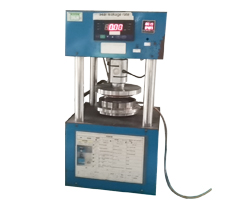


The sealing gasket is a kind of heat exchanger with high heat exchange efficiency of various heat exchangers at present. The utility model has a small area and is convenient to install and disassemble. The gasket should be installed on the cement-based hard ground, and the ground should be provided with drainage ditch. There should be enough space around the heat exchanger for observation and maintenance. The connecting pipeline should be firmly supported, and the longer pipeline should be left with a gap at the bend for cooling and heating.
Before use, check whether the various clamping nuts of each heat exchanger are loose, and tighten if any.
At the high point of the pipeline installation, an exhaust valve should be installed. When the pipeline is full of air, then air is introduced. There should be a drain valve at the lower point of the pipeline, which can be used for drainage. Install thermometers and pressure gauges on the inlet and outlet pipes of the heat exchanger to observe the working conditions during operation.
When the medium is a water-water heat exchanger, on the hot water side, the hot water is discharged from the port of the heat exchanger; on the cold water side, the cold water is mainly discharged from the lower port to the upper port. This is for the heat exchange direction of the heat exchanger in the heat exchanger to be opposite, that is, "countercurrent" heat exchange, so that the heat exchange during the heat exchange process always maintains a relatively balanced temperature, which is beneficial to heat exchange.
When the medium is steam-water heat exchange, steam enters the upper end of the heat exchanger, and the lower end of the interface discharges the condensate. The hot end of the heat exchanger is connected to the single process assembly. No trap is installed at the condensate outlet to make condensation The water drains freely. (Many users install condensed water at the condensate outlet, and the condensed water cannot be discharged smoothly, causing the heating water temperature to be too low. When the condensed water in the steam is discharged, the steam inlet valve can be adjusted to reduce the supply of steam. Condensate discharge It is clean water and should be returned to the boiler. Side cold water enters from the bottom and drains from the upper end.
The above is the whole content introduced by the non-asbestos board manufacturer. For more information on non-asbestos rubber board and non-asbestos fiber board, please follow the company's official website!